Fresh Start in 2025 with 15 Proven Strategies to Excel in Mathematics For 10 - 12 Grades
Fresh Start in 2025 with 15 Proven Strategies to Excel in Mathematics For 10 - 12 Grades
New calendars feel like blank graph paper—crisp, full of potential, and waiting for bold numerical adventures. As 2025 dawns, many teens resolve to read more novels or hit the gym, yet few declare, “This is the year I’ll crush calculus!” Still, turning math frustration into triumph is entirely possible. Think of maths as a complex escape‑room: every riddle solved reveals another lock, each lock builds brain‑power, and the grand prize is a lifelong upgrade in reasoning.

By embracing curiosity, smart planning, and a willingness to experiment, you can re‑brand math from “necessary evil” to “secret super‑power.” Below you’ll discover why high‑schoolers often falter, plus fifteen field‑tested strategies that turn textbook dread into daily momentum. Whether you’re chasing top university placement or simply tired of leaving points on the table, these ideas will help transform 2025 into your personal Big Bang of quantitative confidence. With these math tips for students, you'll finally know how to improve your math skills and how to get better at math.
Why Students Struggle with Math
Great mathematicians rarely stumble into success; they map it. Start by turning vague wishes into measurable milestones: “Raise my algebra grade from 73 to 88,” “Finish every probability worksheet a day early,” or “Score 90‑plus on the March practice SAT.” Concrete targets turn nerves into focus and let you track micro‑wins weekly. Tape those goals above your desk; each glance re‑awakens ambition. These kinds of math tips for students can be the difference between struggle and steady improvement.

Next, chunk the big dream into sprints: today, review domain‑range basics; tomorrow, tackle ten trigonometric identities. Visualization helps, too—picture receiving test papers peppered with red ticks of correctness. That mental movie sparks effort even on lethargic evenings. Finally, review goals monthly. Gauging progress, pivoting tactics, and celebrating mini‑victories fuels long‑term grit, the ingredient students often overlook.
The fear of math often begins subtly—missing one math class, zoning out during a new math concept, or skipping that one basic math learning video. Before long, the subject seems like a foreign language. But trust me, it doesn’t have to be. With consistent support, relatable examples, and personalized techniques, any student can begin to build number skills and solve math problems confidently, even those considered basic math skills. Whether you're trying to improve math skills or just want to get through math homework without tears, this guide is your toolkit. By the end, even those who once hated math might just start calling it their favorite subject.
Why Math Matters More Than Ever
Why cram those formulas when you could scroll social media or binge sitcoms? Because math learning is secret life armor. In our data‑driven era, being fluent in numbers is like holding a backstage pass to tomorrow’s best careers, enabling you to build number skills . It also trains your brain to sniff out patterns, plan projects, and debate decisions—skills that impress employers and help you choose the cheapest phone plan. Strong math tips for students go beyond just test scores—they prepare you for real-world decisions.
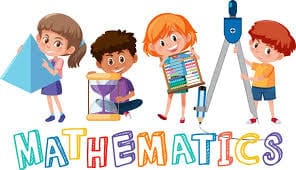
Supports problem‑solving and critical thinking: Each algebraic puzzle grows neural networks that later tackle real‑world enigmas—from climate models to business budgets.
Opens doors to high‑paying, future‑ready careers: Fields like AI, blockchain, and green engineering crave grads who can solve complex equations.
Builds confidence in structured learning: Conquering derivatives proves you can master tough realms. That swagger spills into essays, presentations, and sports.
Proven Strategies to Master Math
Success in math isn’t about being a genius—it’s about persistence, solid understanding, and the right approach. Whether you’re trying to improve math skills for competitive exams or just want to avoid frustration with math homework, these math tips for students can help. Think of it as unlocking big math ideas through small, achievable steps in your math courses . Ready to build your math abilities and change how you see numbers? Let’s dive in.
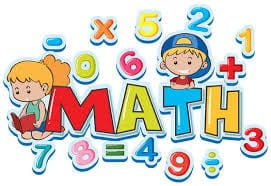
Master the Basics
Without clear understanding of basic math, each new concept becomes a guessing game. Imagine learning algebra without truly grasping multiplication or division—it’s like driving without understanding road signs. Students may pass tests through memorization but crumble during math problems that require deeper application.
This is especially harmful when these gaps go unnoticed for years, quietly sabotaging performance. The good news? Catching up doesn’t mean starting over. You can focus on a specific set of math tips for students that target weak areas and introduce new math ideas. Applying the right math study strategies will show you exactly how to improve in math while strengthening your fundamentals. Revisiting these building blocks using visual tools, games, or videos can help even a struggling math learner rebuild their confidence and abilities while introducing new concepts.
Use game based learning or try an educational app that teaches basic math in a visual, interactive way. For a math averse child or even a teen, tools like math manipulatives or counting toy cars can make basic math learning more tangible. These strategies aren't just for kids—they help solidify your child's math skills, past lessons, and revisit past concepts in a fun and engaging way. Once your basic concepts are strong, tackling tough concepts becomes far more manageable.
Practice Regularly
Practice is the cornerstone of math success. Solving problems every day improves speed, sharpens accuracy, and builds confidence that lasts through exams. Even just 30 minutes of consistent daily effort can transform your approach to complex problems. If you’ve been wondering how to get better at math, regular practice is one of the most effective math tips for students.
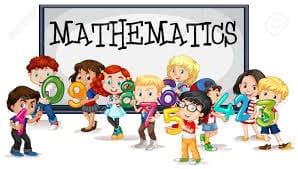
Alternate between online math game platforms and old-school math homework. Combine speed drills with math puzzles that stretch your mind. Incorporate practice tests weekly to measure improvement. These activities help a visual learner stay engaged and build fluency in recognizing big picture concepts. Remember, the more you solve, the more your brain starts seeing patterns—and one day, the math puzzle finally clicks.
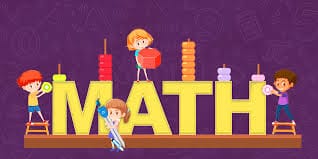
Use dedicated workbooks, topic-specific worksheets, or online platforms that offer progressive difficulty levels to keep practice engaging. It’s essential to vary the types of questions you tackle—multiple choice, word problems, conceptual questions—to ensure your understanding isn’t surface-level. The more variety in your practice, the more versatile and agile your math thinking becomes. Over time, you’ll not only solve faster but also smarter.
Understand the Theory Behind the Formulas
Memorizing formulas may help you pass a test, but understanding why those formulas work is one of the best math tips for students that will leads to real mastery. Dive into derivations and proofs, even if they seem challenging at first—they unravel the logic behind each equation. Understanding how a formula comes together strengthens your ability to apply it creatively in unfamiliar situations. Use real-world examples like measuring plots of land, calculating interest, or designing structures to see math in action. When studying, always ask yourself: “What is this formula solving?” This habit encourages curiosity, deepens understanding, and makes complex mathematical concepts far more approachable and memorable, particularly when you study math actively .
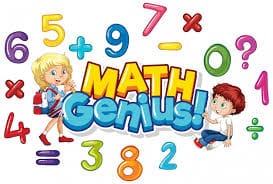
Use diagrams, spatial reasoning, and hands-on activities to make math fun and relatable. For instance, when learning about area or perimeter, use real objects or create models. Understanding how formulas apply in different contexts helps build a solid understanding of mathematical concepts. This approach reduces math anxiety and helps students relate math to real-world applications—from home design to budgeting.
Break Down Complex Problems
Feeling stuck on a word problem? Break it down. Many students struggle with math problems because they try to solve them all at once. Instead, chunk the information into manageable parts. Identify what’s known, what’s unknown, and what operation connects them. This method helps students in math class and beyond to develop better problem-solving skillsand aligns with proven math tips for students.
Use visuals, flowcharts, or even color coding to analyze problems. This is especially helpful for a visual learner or someone experiencing math anxiety. Revisiting the same lessons using different techniques also helps solidify past lessons. Over time, your ability to deconstruct problems improves—and with that, your confidence to solve them does too.
Use Past Papers for Practice
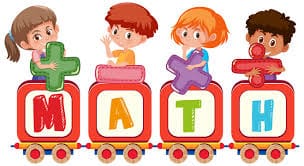
Simulate actual test conditions by setting a timer and working in a distraction-free space. After each session, review your answers, identify recurring mistakes, and adjust your study plan accordingly. Past papers are not just about practice—they’re your preview to success.
Don’t just check the answers—review the steps. Did you make a calculation mistake or misunderstand a concept? This reflection helps in identifying both basic math problems and tough concepts. Combine these papers with help from a math tutor or your child's teacher to strengthen weak areas. You’ll notice that solving similar questions over time builds accuracy and solid understanding.
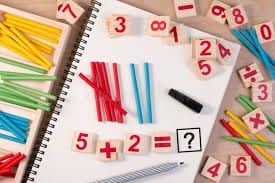
Attend Regular Classes and Revise Notes
Showing up to math class is important, but being mentally present is even more critical. Many students hear the math ideas once and assume they’ll stick—but true retention comes from repetition and effective strategies to study math . Review class notes weekly, rewrite them in your own words, and highlight big picture concepts while using math manipulatives whenever possible . This practice helps you solidify past lessons and connect new math ideas with what you've already learned using reliable math tips for students.
Use sticky notes or digital flashcards to recall basic concepts, especially formulas or theorems you find tricky. For a visual learner, colorful diagrams and flowcharts make learning math more intuitive. Whether you're reviewing past concepts or building upon the same lessons, consistent practice strengthens your memory and reduces math anxiety before exams. Over time, you’ll recognize how to improve your math skills and truly understand how to get better at math.
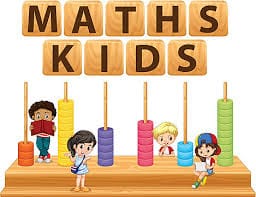
After each class, revise your notes. Summarize big ideas, formulas, and examples in your own words. Use colored pens, flashcards, or diagrams—especially if you're a visual learner. This habit helps child learn math better and benefits even a math averse child. Reviewing the same lessons multiple times may seem boring, but it’s key to solidifying past lessons and reducing the chances of repeating a wrong answer in future tests.
Focus on Weak Areas
It’s natural to want to solve what you’re already good at, but real progress comes when you target what you avoid. Identify your weak points through practice tests, quizzes, or even teacher feedback. Whether it’s algebra, geometry, or basic math problems, focus your study time where it counts most using focused math tips for students.
For a struggling math learner, this step can feel daunting—but that’s where tools like online resources or a math tutor come in. Supplement your weak areas with an educational app, worksheets, or game based learning mentioned platforms. Incorporating math study strategies specific to your challenges helps you understand how to improve in math methodically. Use a journal to reflect on each wrong answer and celebrate when a math puzzle finally clicks. Remember, consistent practice in your weaker areas is what helps you truly improve math skills over time.
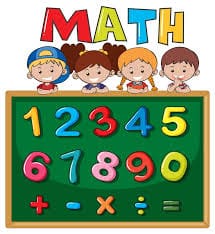
It’s tempting to keep practicing what you already know, but real growth happens when you tackle weaknesses. Maybe it’s basic arithmetic, geometry, or word problems. Identify what’s holding you back—was it an unclear math teacher, skipped notes, or not enough math practice?
Join Study Groups
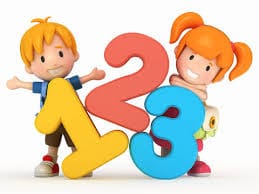
You’re not alone in this math journey. Joining a study group can transform how you study math. Explaining math concepts to others is a great way to reinforce your own basic math skills and tackle various math challenges together. Likewise, hearing a peer’s take on a tricky problem can reveal a strategy you hadn’t considered.
In these sessions, try solving various math challenges together—from equations to word problems. Use this time to revisit past lessons and tackle tough concepts as a team. If you're using a family board game for math or comparing solutions from your math class, you're still building problem solving skills. Peer learning also reduces math anxiety and makes learning math feel less isolating and more social.
Seek Help When Stuck
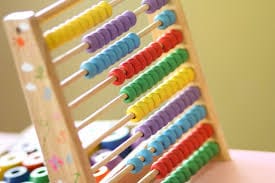
Getting stuck is part of the math learning process. What matters is what you do next. Don’t spend hours frustrated—ask a math tutor, friend, or child's teacher for help. Sometimes, a different explanation can make new concepts suddenly click.
You can also explore online resources like YouTube tutorials, Chatgpt, Deepseek or use an educational app to break down the steps. Many of these platforms make math fun through visuals or game based learning. Whether you're revisiting basic math skills required or dissecting complex equations, seeking help ensures you don’t carry confusion into the next chapter. It’s not weakness—it’s a smart way to improve math skills.
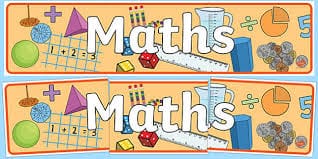
Use Online Resources
The internet is a goldmine of math support if you know where to look. YouTube channels like Khan Academy or Math Antics offer free, high-quality tutorials on nearly every topic. We live in a digital age, and that’s a big win for teaching students math. There’s an abundance of online math tools—from Khan Academy to Photomath—that make solving problems interactive and accessible. These platforms help you study math at your own pace, offering instant feedback on your mistakes. For those seeking effective math tips for students, online tools can provide just the boost needed.
Choose the resources that match your preferred learning style. A visual learner might prefer video tutorials, while others may enjoy interactive quizzes or math challenges. Want to make math fun? Try an online math game that turns practice problems into a race against time or levels to unlock. These options are especially helpful for a math averse child, offering engaging alternatives to traditional textbooks. Using these digital tools as part of your math study strategies will help you clearly understand how to improve in math and learn how to improve your math skills efficiently.
Apply Real-World Examples
One of the best ways to relate math to your life is by applying it daily. Budgeting your allowance? That’s using percentages. Figuring out how many steps it takes to walk to school? That’s distance and time. Even a family board game can involve probability, logical reasoning, and spatial reasoning.
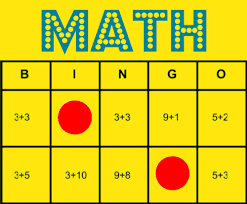
If your child's math skills are growing slowly, try using cooking, shopping, or travel planning to demonstrate basic math. Activities like counting toy cars or asking “how many equal sets do we need?” help kids and teens connect big math ideas to real life. Math teachers often recommend using relatable examples to help math averse children feel like math isn’t just about solving pages of math homework—it’s a practical tool for everyday problem-solving.
Time Management
Managing your time is one of the most underestimated math tips for students. Develop a schedule that breaks large tasks into manageable parts. Mix topics: go from basic arithmetic to complex equations and back. Tackling various math challenges in shorter sessions also helps reduce math anxiety. When students learn to prioritize and solve quickly under pressure, their math abilities improve significantly.
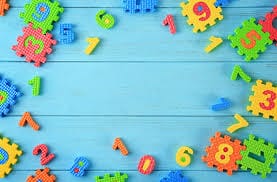
Use Visual Aids
Never underestimate the power of visuals in math learning. Whether it’s color-coded formulas, number lines, or pie charts, visual aids help you grasp mathematical concepts faster. For a visual learner, tools like math manipulatives or educational infographics can turn tough concepts into engaging discoveries.
You can also sketch diagrams to break down complex equations, highlight steps in a proof, or even use digital mind maps to track formulas. Visuals make it easier to revisit past concepts and solidify past lessons. They also improve problem solving skills by offering alternate ways to think through a challenge.
Take Care of Your Mental and Physical Health
You can’t excel in math class if your body and mind aren’t in sync. Proper sleep, hydration, and healthy meals support better thinking. Also, reducing math anxiety means stepping away from negative self talk and using positive self talk instead.
Take short breaks during study sessions, meditate, or do light stretching to refresh your brain. These small habits improve concentration and make solving problems easier. It’s also important to set realistic expectations—no one masters math skills overnight. Be kind to yourself and acknowledge every small improvement, especially when a math puzzle finally clicks.
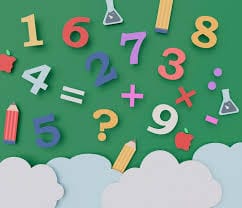
Stay Positive and Persistent
Math can be challenging—but challenge is where growth happens. If you’ve ever thought “I just hate math,” it may be time to change the narrative. The key lies in small wins and tracking how your child learn math day by day. Keep a notebook of difficult topics, record each time you solve something new, and celebrate those victories. These reflective habits are valuable math tips for students.
Whether you’re practicing with an online math game, exploring game based learning, or just solving textbook questions, know that every effort counts. Teaching students to stay consistent, face setbacks with resilience, and lean into support from a math tutor or child's teacher builds lifelong learning habits—not just better math abilities. These practices are part of effective math study strategies and help students understand how to improve in math. changes made to text
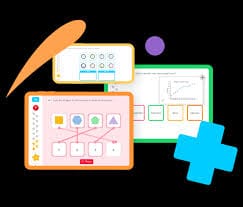
Conclusion
Mastering math in grades 10 to 12 isn’t about being born with “talent.” It’s about using the right math tips for students, developing basic math skills, and maintaining consistent practice. Whether you’re preparing for entrance exams, school finals, or just aiming to improve math skills step-by-step, the strategies here are your roadmap. With the right math study strategies, you’ll begin to see clearly how to improve in math and how to improve your math skills.
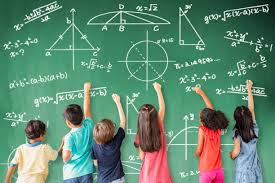
Make use of online resources, focus on basic concepts, and don’t hesitate to revisit past lessons when needed. Use practice problems, set personal goals, and explore educational apps or family board games to keep math fun. In 2025, let’s make teaching students math less of a burden and more of a breakthrough—because when you actively study math and the math puzzle finally clicks, everything changes. These consistent study tips for math help students understand how to get better at math—not overnight, but one confident step at a time.
Strategies to Excel in Mathematics – FAQs
1. How can I improve my mathematics skills in grades 10–12?
Improving your math skills in grades 10–12 requires a mix of strategy, consistent effort, and the right mindset. Start by mastering the basic math skills required for high school success. These include understanding basic concepts, practicing arithmetic, and revisiting past lessons where you're unsure. Use your math class time wisely—actively participate, ask questions, and connect with your math teacher if you're stuck. For struggling math learners, it's important to build confidence by starting with basic math learning tools such as online math games, worksheets, or even a family board game to make it more fun.
Set aside at least 30 minutes each day for consistent practice. Use online resources like Khan Academy, Codeyoung, or a math tutor to study math in a structured way. Focus on solving problems from various math courses, especially areas that you find tough. Break down complex math problems into smaller steps and approach them with a problem solving skills mindset. When a math puzzle finally clicks, you'll feel a surge of motivation that pushes your math learning further.
To improve math skills, don't just memorize formulas—understand the logic behind them. Try counting objects at home (like counting toy cars) to sharpen number sense. Build spatial reasoning and logical reasoning with puzzles and math manipulatives. Engage in game based learning, which helps reduce math anxiety and improves a child’s math skills in the long run. If you're a visual learner, look for educational apps that illustrate mathematical concepts in colorful, interactive ways. Keep a positive self talk routine to overcome negative self talk when facing tough concepts, and never be afraid to revisit past concepts until your understanding is rock solid.
2. What should I focus on when revising for math exams?
When revising for math exams, having a strategic plan can significantly improve your math skills and confidence. Begin by organizing your math class notes, focusing on basic math skills and the math concepts you've covered throughout the term. Identify and list basic math problems or complex equations that have challenged you before.
Use practice problems and practice tests to simulate exam conditions. These tools help develop problem solving skills and test your ability to solve math problems under pressure. To strengthen your math abilities, time your answers and track how well you're doing across various math courses. This consistent approach helps you study math more effectively, especially in high-weightage chapters. Use online resources like Brilliant or a personalized math tutor to explain tough concepts clearly. These platforms support game based learning, which is great for reducing math anxiety and reinforcing the same lessons through engaging challenges.
For visual learners, flashcards, diagrams, and color-coded summaries can simplify big picture concepts. Use math manipulatives or educational videos to break down new math ideas. If you're reviewing with friends, turn it into a family board game or quiz to make the process more interactive and math fun. Encourage yourself with positive self talk and avoid negative self talk when you get a wrong answer. Learning from mistakes is key to real progress. Lastly, connect new information with past lessons, and try to relate math to everyday life, like calculating scores or building budgets. That’s how even the most math averse child can thrive.
3. How do I overcome difficulty in advanced math topics like calculus or trigonometry?
Facing advanced math topics like calculus or trigonometry can feel overwhelming, especially for a struggling math learner, but with the right strategy, they become manageable. Begin by breaking each topic into smaller parts—focus on basic concepts like limits or angle identities before moving into more complex equations. To build a solid understanding, revisit past concepts covered in earlier grades, as these form the core of basic math skills required for advanced topics. Use visual tools such as graphs, diagrams, or animations if you're a visual learner, as these methods make it easier to process mathematical concepts and big picture concepts.
Supplement your learning using online resources, educational apps, or interactive math courses that specialize in advanced math concepts. Codeyoung, for instance, offers game-based lessons designed to help child learn math through engaging and fun strategies.
To truly master advanced topics, consistent math practice is key. Work through a variety of practice problems daily and keep a notebook of wrong answers to track where you're struggling. Use logical reasoning and spatial reasoning to explore alternate solving techniques. When you're stuck, go back and revisit past concepts—sometimes reviewing how to solve math problems from previous math classes gives you insight into the new material. And remember, the moment when the math puzzle finally clicks is worth the effort. Keep up the positive self talk, remind yourself that you're making progress, and know that every attempt helps reduce math anxiety over time.
4. How can I make math more enjoyable and less stressful?
Making math fun is all about how you approach it. Shift your mindset from "I hate math" to "I’m learning how to enjoy it" through small, consistent changes. Start with game based learning, which turns learning into play. Try out an online math game or a family board game that includes math challenges like counting, solving puzzles, or matching patterns. These methods help even a math averse child develop a stronger connection with basic math, turning fear into curiosity. You’ll also discover that math manipulatives—like number blocks or visual aids—can help make abstract math concepts much more tangible.
Engage with math ideas through real-world experiences. Use cooking to practice ratios, budgeting for percentages, or sports stats to develop problem solving skills. You’ll naturally start to relate math to your life, building math abilities and a solid understanding of basic math learning. Keep in mind that the goal is to improve math skills, not chase perfection. Using educational apps, online resources, or even talking with your child's teacher can introduce fresh, new concepts and make math learning exciting. When the math puzzle finally clicks, it feels like unlocking a secret—and that’s incredibly satisfying.
Keep motivation high with positive self talk and ditch the negative self talk that tells you you’re “just bad at math.” Try a mix of practice problems, online math, and collaborative activities like study groups to boost your math skills.
5. How can I improve my time management during math exams?
Improving time management during math exams is a vital math skill that every student should build through consistent practice. Begin by creating a schedule for study math practices and simulating real exam conditions at home. This helps struggling math learners get used to pacing themselves and makes solving problems feel less intimidating. Prioritize high-weight questions first during exams to maximize scores. Save time by using mental math techniques learned in math class and simplify basic math problems quickly. Practicing this in advance builds speed and accuracy, giving students confidence in their math abilities.
6. What are the best online resources to help me improve in math?
There are several high-quality online resources available to support your learning journey. Platforms like Khan Academy offer structured lessons and interactive practice on nearly every math topic. Brilliant.org focuses on problem-solving and logical thinking with visual explanations. Photomath and Wolfram Alpha are great for checking solutions and understanding steps. If you’re looking for structured classes with interactive games and mentorship, Codeyoung is ideal for students who want personalized guidance.
There are countless online resources available today that can significantly improve your math skills. Platforms like Khan Academy, Brilliant, and Codeyoung offer structured math courses that help with everything from basic math skills to advanced mathematical concepts. These tools are especially helpful for a struggling math learner who needs to revisit basic concepts and solidify past lessons to improve math skills effectively . With video tutorials, online math games, and interactive tools, students can learn at their own pace and revisit past concepts as often as needed.
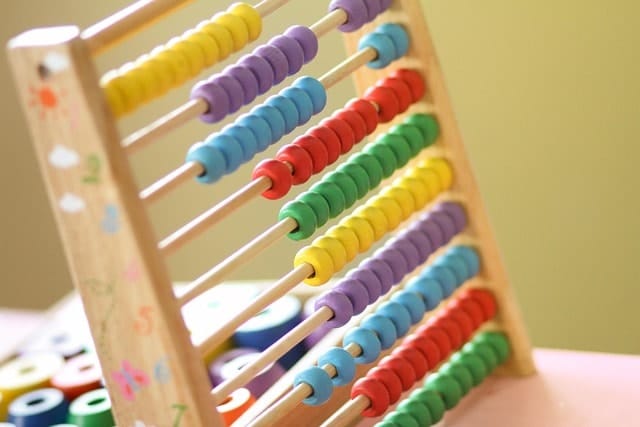
If you're a visual learner, platforms that use game based learning or simulations are incredibly effective. For those who hate math or feel blocked by math anxiety, these platforms also include features to boost positive self talk and encourage logical reasoning and spatial reasoning. If your child's teacher recommends any specific resource or math tutor, give it a try—it might be just what your math averse child needs to finally see that math can be fun and rewarding.